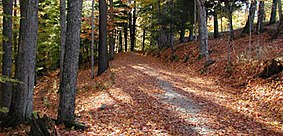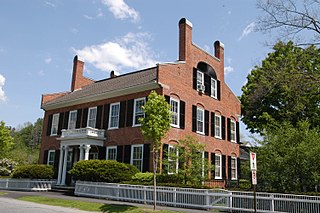
Woodstock is an incorporated village located within the town of Woodstock in Windsor County, Vermont, United States. As of the 2020 census, the village population was 900.

Woodstock is the shire town of Windsor County, Vermont, United States. As of the 2020 census, the town population was 3,005. It includes the villages of Woodstock, South Woodstock, Taftsville, and West Woodstock.

Laurance Spelman Rockefeller was an American businessman, financier, philanthropist, and conservationist. Rockefeller was the third son and fourth child of John D. Rockefeller Jr. and Abby Aldrich Rockefeller. As a trustee of the Rockefeller Brothers Fund, he provided venture capital for Intel, Apple Computer and many other successful start-ups. Rockefeller was known for his involvement in wilderness preservation, ecology and the protection of wildlife. His crusade was the establishing of a conservation ethic, and he was declared America's leading conservationist by Lady Bird Johnson.
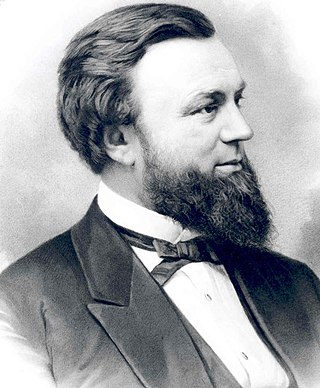
Frederick H. Billings was an American lawyer, financier, and politician. He is best known for his legal work on land claims during the early years of California's statehood and his presidency of the Northern Pacific Railway from 1879 to 1881.

The George Washington Birthplace National Monument is a national monument in Westmoreland County, Virginia, at the confluence of Popes Creek and the Potomac River. It commemorates the birthplace location of George Washington, a Founding Father and the first President of the United States, who was born here on February 22, 1732. Washington lived at the residence until age three and later returned to live there as a teenager.
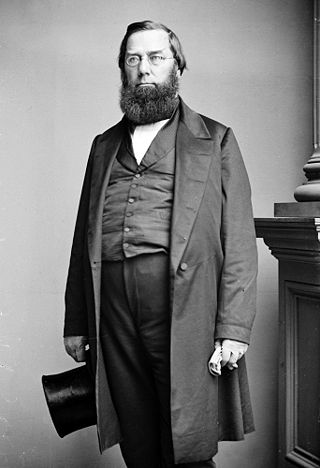
George Perkins Marsh, an American diplomat and philologist, is considered by some to be America's first environmentalist and by recognizing the irreversible impact of man's actions on the earth, a precursor to the sustainability concept, although "conservationist" would be more accurate. The Marsh-Billings-Rockefeller National Historical Park in Vermont takes its name, in part, from Marsh. His 1864 book Man and Nature had a great impact in many parts of the world.

Charles Marsh was an American politician from Vermont. He served as a member of the United States House of Representatives.
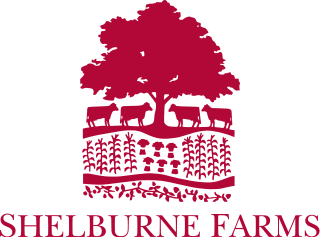
Shelburne Farms is a nonprofit education center for sustainability, 1,400 acres (570 ha) working farm, and National Historic Landmark on the shores of Lake Champlain in Shelburne, Vermont. The property is nationally significant as a well-preserved example of a Gilded Age "ornamental farm", developed in the late 19th century with architecture by Robert Henderson Robertson and landscaping by Frederick Law Olmsted.
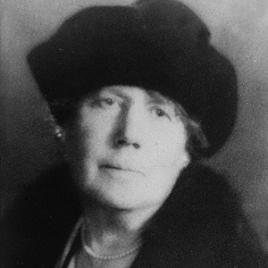
Martha Brookes Hutcheson was an American landscape architect, lecturer, and author, active in New England, New York, and New Jersey.

A Place in the Land is a 1998 American short documentary film directed by Charles Guggenheim with field director Judith Dwan Hallet. It was nominated for an Academy Award for Best Documentary Short.
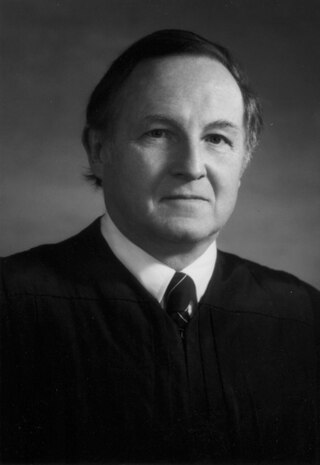
Franklin Swift Billings Jr. was an American politician and judge from the state of Vermont. Billings served as Speaker of the Vermont House of Representatives, Chief Justice of the Vermont Supreme Court and Chief United States district judge of the United States District Court for the District of Vermont.
Frederick Warren Stickney was an American architect.
The First Congregational Church of Woodstock, Vermont is an active Congregational church in Woodstock, Vermont. The original building was constructed in 1807. It acquired a bell produced by Paul Revere. The building was rebuilt in 1890.

Mary Billings French Rockefeller was an American heiress, socialite, philanthropist, and a member of the extensive Rockefeller family. She was married to Laurance Rockefeller, son of John Davison Rockefeller Jr. and Abby Aldrich Rockefeller. She was the mother of Laura Rockefeller Chasin, Marion Rockefeller Weber, Lucy Rockefeller Waletzky, and Laurance Spelman Rockefeller Jr.
Mary Montagu Billings French was an American heiress and society figure, as well as YWCA president and board member. She was the daughter of Frederick Billings and inherited the Marsh-Billings-Rockefeller National Historical Park from him before she died. She passed it on to her daughter, Mary French Rockefeller.

The Charles Marsh Law Office is a historic building at 72 Hartland Hill Road in Woodstock, Vermont. Now a private residence, this moved and altered structure, built about 1797, is the oldest surviving example of a detached law office in the state. It was built for lawyer Charles Marsh, and is where his sons George Perkins Marsh and Lyndon Arnold Marsh trained for and/or practiced law. The building was listed on the National Register of Historic Places in 1994.
Mount Tom is a small peak, standing at 1357 feet, located in the town of Woodstock, Vermont. It is a part of the Marsh-Billings-Rockefeller National Historical Park. The peak has a multitude of hiking, running, and Nordic skiing trails, and has many sites dedicated to the national park. Standing in the middle of Woodstock, Vermont, the peak also is host to many annual town events, including the Road to the Pogue Race. Visible from the top are sights such as the village of Woodstock, the sister peak of Mount Tom, the Ottauquechee River, Vermont Route 4A, and many neighboring mountains.
Thomas M. Debevoise was a Vermont attorney who served as Vermont Attorney General from 1960 to 1962.
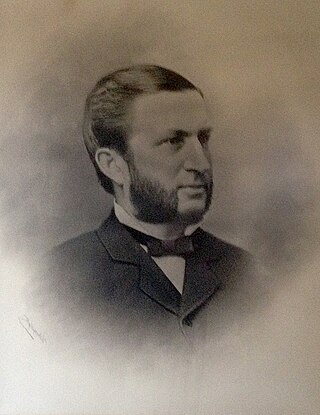
Franklin Noble Billings was a Vermont businessman and merchant. A member of the prominent Billings family, he was notable for his investment stakes and management roles in several Vermont businesses. He was the father of Governor Franklin S. Billings and grandfather of Judge Franklin S. Billings Jr. In addition, he was the brother of Frederick H. Billings, uncle of Mary Billings French, and grand-uncle of Mary French Rockefeller.

F. H. Gillingham & Sons is a historic general store in Woodstock, Vermont. Specializing in retail and mail order, the company was established in 1886 and is operated by the Billings family.


